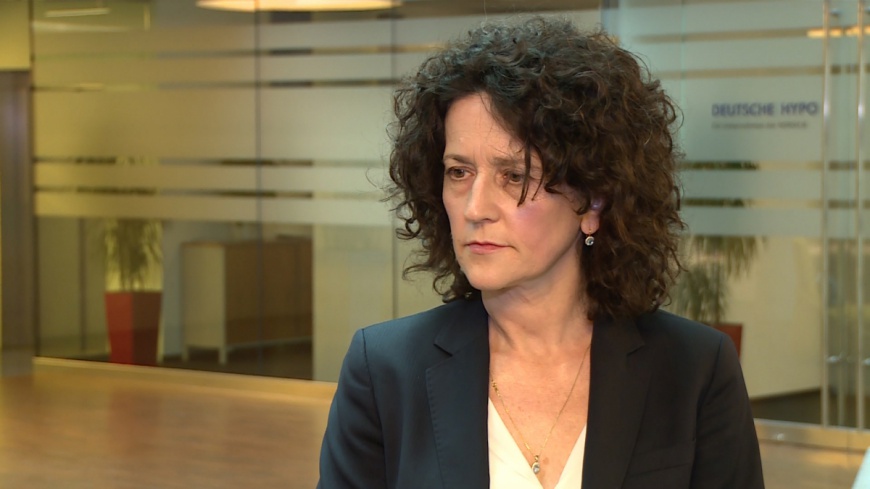| Says: | Beata Latoszek |
| Function: | Managing Director at Deutsche Hypo in Poland |
The economic boom on European real property markets is becoming weaker, with Poland being an exception.
“The activity of foreign investors on the Polish real property market is still growing. In their view, Polish cities stand for stability and guaranteed profit, especially when compared with Western Europe. On the Polish investment market, and more specifically in the commercial property sector, Q1 2018 ended with a record-breaking volume of transactions, reaching EUR 2 bn. The demand is, however, much greater than the supply of good-quality structures, which causes a price hike. When coupled with the increasing construction costs and the shortage of qualified staff, this can slow down investors’ activity,” said Beata Latoszek from Deutsche Hypo.
“When analysing data from Q1 2018, the situation on the real property market in Poland looks stable. Since December investors have been interested in the real property market. Rather than weakening, this interest has actually become stronger. All the indicators taken into account on the real property market, such as interest rates, risk trends and climate, look very promising, which is why the real property market, following the Q1 analysis, looks more stable than other Western European markets, such as the United Kingdom, Germany, France and Spain,” Beata Latoszek, Managing Director at Deutsche Hypo in Poland, highlighted in an interview with Newseria Biznes.
The European Investment Briefing by Savills indicates that the 2017 turnover volume in Poland exceeded EUR 5.1 bn, which was a record-breaking figure. 2018 may bring even better outcomes when it comes to investments in the commercial real property sector, as indicated by Q1 results, with the transaction volume surpassing EUR 2 bn. As analysed by Deutsche Hypo, the activity of foreign investors, mainly from the USA, Canada, Asia and South Africa, has been on the rise. Investors are being attracted by the stable situation and good profitability, which is higher than in Western Europe.
“A stable situation on the real property market results from five parameters which we presented in our REECOX index, drawn up for Q1 of the real property market in Europe,” Beata Latoszek stated. “This index is composed of inputs, such as WIG20, WIG Real estate, investment climate and interest rates, the base rate for Euro and 10-year treasury note,” the expert explained.
According to the REECOX report, the economic situation on the real property market is in a slight decline, reaching the lowest levels since May 2017 (a Euro-Score of 241.6 compared to 249.8 in the previous quarter). Having scored 189, Poland ranks much lower than the remaining countries (Germany, the United Kingdom, France, Spain and the Netherlands); however, while the situation in Poland is stable (an unnoticeable decrease of 0.1 percent), other countries record sharp drops.
“In Q1 the stock exchanges throughout Western Europe, as well as in Poland, displayed downward trends. As regards WIG Real estate, all countries show downward trends, with this indicator being stable in Poland,” the director of Deutsche Hypo in Poland noted.
At the end of Q1, WIG 20 dropped by 6.5 percent in Poland, when compared with the previous month, and by slightly more than 10 percent in quarterly terms. Nonetheless, the Economic Sentiment Indicator is on the rise (a 3.1 percent increase), and the WIG index of the real estate sector is stable (a slight increase of 0.2–0.3 percent).
“Looking at the volume of the transactions made in Q1, we can see investors’ appetite for investing in Poland. The REECOX index shows a growing trend, because the profitability of projects implemented on the Polish market is higher than that in Western Europe, and thus outputs indicate that the Polish market is stable, the exchange rates for Euro remain the same, and the situation regarding and Polish bonds is also relatively stable,” Latoszek underline.
A stable situation on the real property market results from five parameters which we presented in our REECOX index, drawn up for Q1 of the real property market in Europe.
Looking back, Q1 the stock exchanges in Poland and throughout Western Poland, i.e. in the countries included in the index calculations, such as the United Kingdom, Germany, France, the Netherlands and Spain, displayed downward trends. The same was observed in Poland. As regards WIG Real estate, all countries but Poland have shown downward trends. The indicator is stable in Poland. Looking at the volume of transactions made in Q1, we can see investors’ appetite for investing in Poland. The REECOX index shows a growing trend because the profitability of projects implemented on the Polish market is higher than that in Western Europe. The outputs, therefore, indicate that the Polish market is stable, the exchange rates for Euro remain the same, and the situation regarding and Polish bonds is also relatively solid. To conclude, these 5 indicators provide us with an image of the REECOX for Poland, and tell us that it is a stable market, or at least this is what Q1 showed us.
We are obviously going to closely monitor the market in the subsequent quarters, with data collected on a monthly basis. We will also publish REECOX figures for every quarter. The index is primarily used by market players and shows them the current trends, sentiment and the possible directions of those trends in the quarters to come.
Trade

Polish consumers are more satisfied than Americans, with the customer satisfaction level being close to 80 percent
For six years the customer satisfaction index in Poland has grown by over 17 percentage points to nearly 78 percent, and it currently exceeds the customer satisfaction levels recorded in the USA and the United Kingdom. Service quality and its growing significance among businesses have had a tremendous impact on customer satisfaction. For the eleventh time the Customer Service Quality Star titles have been awarded to entrepreneurs recording the best results in this field.

